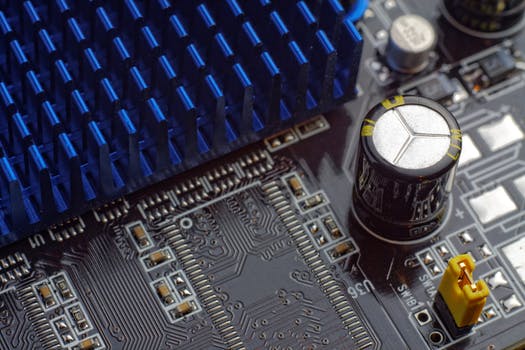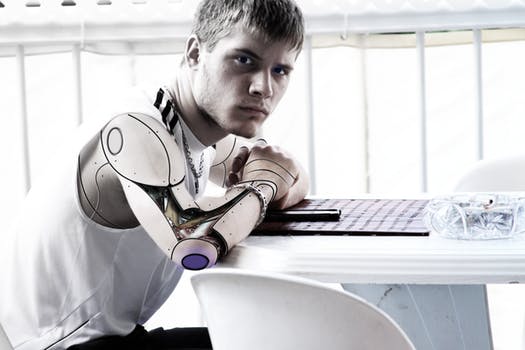TheDeveloperBlog.com
C-Sharp | Java | Python | Swift | GO | WPF | Ruby | Scala | F# | JavaScript | SQL | PHP | Angular | HTML
Computer Graphics Cathode Ray Tube | CRT
Computer Graphics Cathode Ray Tube | CRT with Computer Graphics Tutorial, Line Generation Algorithm, 2D Transformation, 3D Computer Graphics, Types of Curves, Surfaces, Computer Animation, Animation Techniques, Keyframing, Fractals etc.
Cathode Ray Tube (CRT):CRT stands for Cathode Ray Tube. CRT is a technology used in traditional computer monitors and televisions. The image on CRT display is created by firing electrons from the back of the tube of phosphorus located towards the front of the screen. Once the electron heats the phosphorus, they light up, and they are projected on a screen. The color you view on the screen is produced by a blend of red, blue and green light. 
Components of CRT:
Main Components of CRT are: 1. Electron Gun: Electron gun consisting of a series of elements, primarily a heating filament (heater) and a cathode. The electron gun creates a source of electrons which are focused into a narrow beam directed at the face of the CRT. 2. Control Electrode: It is used to turn the electron beam on and off. 3. Focusing system: It is used to create a clear picture by focusing the electrons into a narrow beam. 4. Deflection Yoke: It is used to control the direction of the electron beam. It creates an electric or magnetic field which will bend the electron beam as it passes through the area. In a conventional CRT, the yoke is linked to a sweep or scan generator. The deflection yoke which is connected to the sweep generator creates a fluctuating electric or magnetic potential. 5. Phosphorus-coated screen: The inside front surface of every CRT is coated with phosphors. Phosphors glow when a high-energy electron beam hits them. Phosphorescence is the term used to characterize the light given off by a phosphor after it has been exposed to an electron beam.
Next TopicRandom Scan and Raster Scan Display
|
Related Links:
- Computer Network | Transport Layer Protocols
- Computer Network | Application Layer
- Computer Graphics Cathode Ray Tube | CRT
- Computer Graphics Direct View Storage Tubes
- Computer Graphics Flat Panel Display
- Computer Graphics | Input Devices
- Computer Graphics Scan Conversion Definition
- Computer Graphics | Trackball
- Computer Graphics | Light Pen
- Computer Graphics | Image Scanner
- Computer Graphics | Output Devices
- Computer Graphics | Plotters
- Computer Graphics Scan Converting a Point
- Computer Graphics Scan Converting a Straight Line
- Computer Graphics DDA Algorithm
- Computer Graphics Bresenham's Line Algorithm
- Computer Graphics Defining a Circle
- Computer Graphics Boundary Fill Algorithm
- Computer Graphics Flood Fill Algorithm
- Computer Graphics Scan Line Polygon Fill Algorithm
- Computer Graphics | Line Clipping
- Computer Graphics Introduction of Transformation
- Computer Graphics Translation
- Computer Graphics Scaling
- Computer Graphics Rotation
- Computer Graphics Reflection
- Computer Graphics Shearing
- Computer Graphics Homogeneous Coordinates
- Computer Graphics Composite Transformation
- Computer Graphics Window
- Computer Graphics Window to Viewport Co-ordinate Transformation
- Computer Graphics Zooming
- Computer Graphics Panning
- Computer Network | Error Correction
- Computer Network | Error Detection
- Computer Architecture VS Computer Organization
- Computer Instructions | Computer Organization and Architecture Tutorial
- Computer Registers
- Computer Network Routing | Types of Routing
- Computer Network | Digital Signature
- PGP - Pretty Good Privacy
- Computer Graphics Programs
- Computer Graphics | Clipping
- Computer Network Tutorial
- Computer Graphics Tutorial
- Computer Graphics | Text Clipping
- Computer Graphics | Polygon
- Computer Graphics Pointing and Positioning Techniques
- Computer Graphics Elastic or Rubber Band Techniques
- Computer Graphics Color CRT Monitors
- Computer Graphics | Point Clipping
- Computer Graphics Dragging
- Computer Graphics 3D Shearing
- Computer Graphics Introduction of Shading
- Computer Network | TCP/IP model
- Computer Graphics Constant Intensity Shading
- Computer Graphics Gouraud shading
- Computer Graphics Phong Shading
- Computer Graphics Animation
- Computer Graphics Hidden Surface Removal
- Computer Graphics Back Face Removal Algorithm
- Computer Graphics Application Areas of Animation
- Computer Graphics Animation Functions
- Computer Graphics 3D Graphics
- Computer Graphics 3D Transformations
- Computer Graphics 3D Scaling
- Computer Graphics 3D Rotation
- Computer Graphics 3D Rotation about Arbitrary Axis
- Computer Graphics 3D Inverse Transformations
- Computer Graphics 3D Reflection
- Computer Organization and Architecture Tutorial | COA Tutorial
- Computer Graphics Bresenham's Circle Algorithm
- Computer Graphics Midpoint Circle Algorithm
- Computer Graphics Painter's Algorithm
- Computer Graphics Scan Line Algorithm
- Computer Graphics Area Subdivision Algorithm
- Computer Graphics 3D Modelling System
- Computer Graphics Projection
- Computer Graphics Perspective Projection
- Computer Graphics Parallel Projection
- Computer Network Digital Transmission
- Top 50 Computer Graphics Interview Questions (2021)
- Computer Graphics Midpoint Ellipse Algorithm
- HTTP - HyperText Transfer Protocol
- Computer Graphics Z-Buffer Algorithm
- Computer Graphics Display Processor
- Computer Network | Routing Algorithm
- Learn Computer Fundamentals Tutorial
- Computer Graphics Scan converting a Ellipse
- Computer Graphics Polynomial Method
- Computer Graphics Trignometric Method
- Computer Network Introduction
- Computer Network Components
- Computer Network Topologies
- Computer Network | Transmission Modes
- Computer Network Models
- Computer Network | Switching Techniques
- Computer Network | Switching Modes
- Computer Network | Client and Server Model
- DNS - Domain Name System
- FTP - File Transfer Protocol
- Telnet - Terminal Network
- Computer Network Features
- Computer Network Architecture
- Computer Network | Switching
- Computer Network Security
- Computer Network Privacy
- Computer Network | Transport Layer

